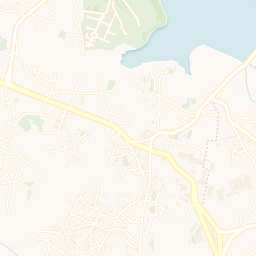
Planning a Trip to Madagascar in 2025: A Comprehensive Guide
Madagascar, the world’s fourth-largest island, is a biodiversity hotspot unlike any other. Planning a trip to this unique destination in 2025 requires careful consideration of its diverse landscapes, optimal travel times, and the incredible experiences awaiting you. From lemurs swinging through lush rainforests to pristine beaches lapped by the Indian Ocean, Madagascar offers an unforgettable adventure for nature lovers and intrepid travelers alike. This guide will provide you with essential information on top destinations, the best time to visit, and helpful tips to make the most of your Malagasy adventure.
Top Places to Visit in Madagascar
Madagascar boasts a diverse array of attractions, each offering a unique glimpse into the island’s natural beauty and cultural heritage.
Northern Madagascar
- Nosy Be: Known as “Perfume Island” for its ylang-ylang plantations, Nosy Be offers stunning beaches, turquoise waters, and opportunities for diving and snorkeling.
- Montagne d’Ambre National Park: A lush rainforest teeming with endemic wildlife, including lemurs, chameleons, and colorful birds. Perfect for hiking and exploring.
- Diego Suarez (Antsiranana): A historic port city with a stunning natural harbor, offering opportunities for sailing, windsurfing, and exploring nearby beaches and bays.
Central Madagascar
- Antananarivo (Tana): The capital city, offering a glimpse into Malagasy culture, history, and architecture. Explore the Rova of Antananarivo and the bustling markets.
- Andasibe-Mantadia National Park: Home to the Indri, Madagascar’s largest lemur, and a variety of other endemic species. Guided tours are highly recommended.
- Ranomafana National Park: A UNESCO World Heritage Site renowned for its biodiversity, including rare lemurs, orchids, and medicinal plants.
Southern Madagascar
- Isalo National Park: A dramatic landscape of sandstone canyons, plateaus, and oases. Ideal for hiking, rock climbing, and admiring the unique flora and fauna.
- Toliara (Tulear): A coastal city known for its beaches, coral reefs, and the nearby Arboretum d’Antsokay, a unique botanical garden showcasing the spiny forest ecosystem.
- Ifaty: A popular beach destination with clear waters, coral reefs, and opportunities for diving, snorkeling, and whale watching (seasonal).
Best Time to Visit Madagascar
The best time to visit Madagascar depends on your priorities and the regions you plan to explore.
Dry Season (April to October)
The dry season is generally considered the best time to visit Madagascar, offering pleasant temperatures, low humidity, and minimal rainfall. This period is ideal for wildlife viewing, hiking, and beach activities.
Wet Season (November to March)
The wet season is characterized by high temperatures, humidity, and heavy rainfall, particularly along the east coast. Some roads may become impassable, and certain national parks may be closed. However, the wet season can also offer lush landscapes and fewer crowds.
Fact: Madagascar is home to over 90% of plant and animal species found nowhere else on Earth. This makes it a critical biodiversity hotspot and a must-see destination for nature enthusiasts.
Travel Guides and Tips
Planning a trip to Madagascar requires careful consideration and preparation. Here are some helpful tips:
- Visas: Most nationalities require a visa to enter Madagascar. Check the latest visa requirements before your trip.
- Vaccinations: Consult your doctor about recommended vaccinations and malaria prophylaxis.
- Currency: The Malagasy Ariary (MGA) is the local currency. US dollars and Euros are widely accepted in tourist areas.
- Language: Malagasy and French are the official languages. Learning a few basic phrases in Malagasy will be greatly appreciated.
- Transportation: Domestic flights, buses, and taxis are available for transportation. Hiring a 4×4 vehicle is recommended for exploring remote areas.
FAQ
Q: What is the best way to see lemurs in Madagascar?
A: Visit national parks like Andasibe-Mantadia, Ranomafana, or Montagne d’Ambre. Hire a local guide for the best chance of spotting these elusive creatures.
Q: Is Madagascar safe for tourists?
A: While Madagascar is generally safe, petty theft can occur, particularly in urban areas. Take precautions to protect your belongings and avoid walking alone at night.
Q: What should I pack for a trip to Madagascar?
A: Pack lightweight, breathable clothing, sturdy hiking shoes, insect repellent, sunscreen, a hat, and a rain jacket (especially if visiting during the wet season).
Q: Can I use my credit card in Madagascar?
A: Credit cards are accepted in larger hotels and restaurants, but it’s advisable to carry cash for smaller establishments and remote areas.
Q: What is the local food like in Madagascar?
A: Malagasy cuisine is a blend of African, Asian, and European influences; Rice is a staple, often served with meat, seafood, or vegetables. Try the local Romazava stew and Koba cake.